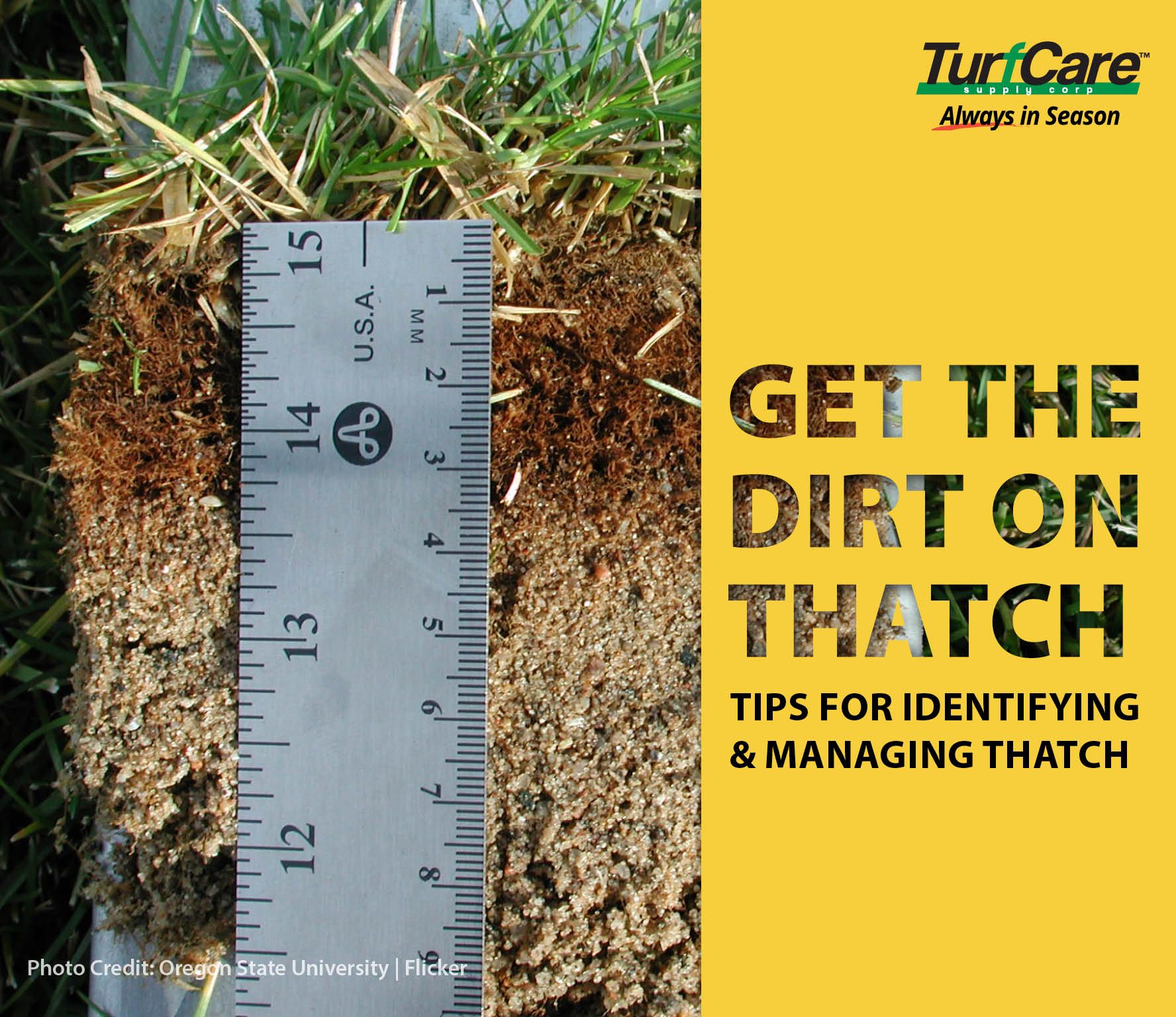Get the Dirt on Thatch

TIPS FOR IDENTIFYING & MANAGING THATCH
Thatch is a loose, intermingled organic layer of dead and living stems, shoots, and roots. It develops between the area of grass and the soil surface. Thatch is beneficial to your lawn’s health as long as it is not an extensive amount. Healthy thatch should be up to ½ inch thick, anything more means your lawn may have thatch buildup. Buildup begins when your lawn creates organic debris faster than it is broken down. When you have a thatch problem it compromises your lawn health by:
- Forming an impermeable layer that prevents fertilizer, water and insect/disease controls to reach the soil.
- Promoting a shallow grass root system since grass ends up growing into thatch instead of nutrient rich soil.
- Blocking sunlight from lower grass blades.
- Harboring a potential disease by holding moisture against grass blades.
- Creating an uneven lawn that leads to scalping while mowing.
IDENTIFY WHEN YOU NEED TO DETHATCH
- Feel your Lawn. If it feels spongy and is bouncy/springy underfoot, then there may be a thick layer of thatch built-up.
- Inspect your Lawn. If you can’t see the soil between the turf crowns and you can’t shove your finger though the visible layer of thatch, then you should consider dethatching your lawn.
- Measure the Thatch. Pry up a small section of soil with a shovel and examine the thatch layer directly on top of the soil. If it’s over ¾ of an inch, then it’s time to dethatch.
MANAGING YOUR THATCH PROBLEM
Dethatch. When your lawn has thatch buildup you have three options for removal:
- Manually: For small jobs, you can dethatch with a rake (dethatching rakes can be purchased online or at your local home improvement store).
- Rent: You can rent a dethatcher (vertical cutter, verticuter or power rake). There are many different models and they can be heavy machines with different settings so be sure to talk to your rental facility for advice.
- Hire a Professional: If you think you need to dethatch and/or the project is too large for you to handle, hire a lawn care professional to successfully take care of the thatch problem for you.
Prevent. Follow the four basic techniques of a healthy lawn to prevent a future thatch problem: proper watering, fertilizing, mowing and regular aeration.
For professional fertilizers, humic and AMP-XC™ enriched products available, please visit TurfCare’s online Product Catalog.
For green industry professionals or others interested in ordering Turfcare products, please contact our Customer Service to find a distributor near you.









